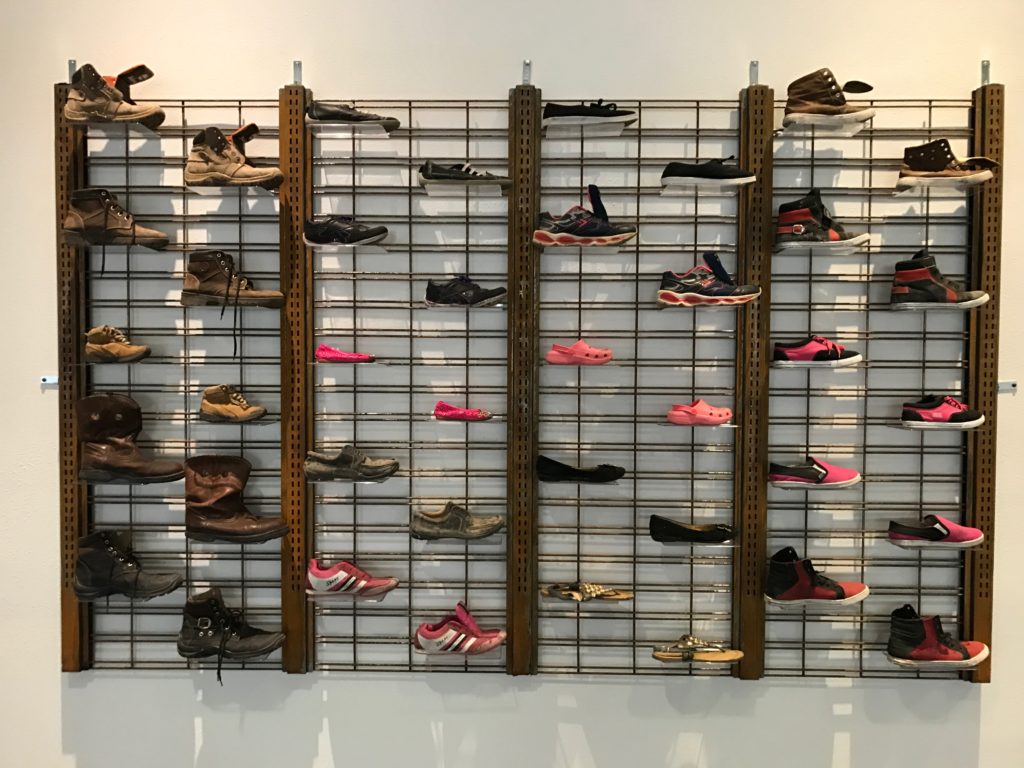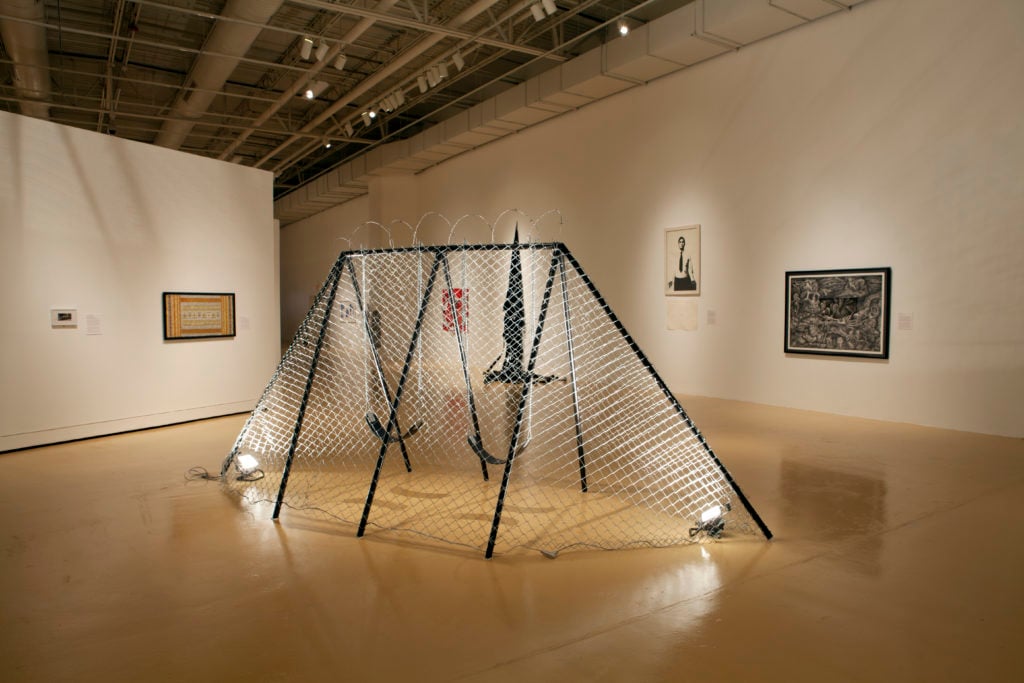Politics
Forget the Wall, Next Year’s Transborder Biennial Will Take Place in Both the US and Mexico
Can the jointly run Transborder Biennial serve as a model for the nation states of US and Mexico?
Can the jointly run Transborder Biennial serve as a model for the nation states of US and Mexico?
Sarah Cascone

The fifth edition of the Transborder Biennial, exploring themes connected to immigration and other hot-button issues, will take place in both the US and Mexico in 2018. The event is organized by Texas’s El Paso Museum of Art (EPMA) and Mexico’s Museo de Arte de Ciudad Juárez (MACJ).
Artists living within 200 miles of either side of the US-Mexico border—a massive area that encompasses the cities of Los Angeles, Chihuahua, San Diego, Tijuana, El Paso, Juárez, and San Antonio, among others—are invited to submit their work to an upcoming open call. The museum has announced this edition earlier than usual, in the hopes of attracting more out-of-state submissions. (The deadline will be November 2017.)

Abel Saucedo, Tunnel Runner, made from shoes worn by undocumented immigrants during failed efforts to cross the border from Mexico into the US, currently on view at the El Paso Museum of Art as part of the LabEPMA program for local artists. Courtesy of the El Paso Museum of Art.
At a time when the US is looking to securing its southern perimeter with a border wall, in fulfillment of President Donald Trump’s controversial campaign promise, the biennial, founded in 2008, is more timely than ever. “Nationally, people are talking about the border, the safety of the border, living along the border, and we actually do it [live here],” El Paso Museum director Victoria Ramirez told artnet News. “Every day thousands of people cross the border. They live on one side and work on the other—it’s a very fluid way of life here.”
With that in mind, both museums have their own exhibition for the biennial, with selected artists each submitting not one, but two works. The curators from both institutions then work together to create two separate but closely related shows. “They have the same artists but the work can be very different,” noted Ramirez. “It encourages people to cross the border to see both exhibitions.”
According to the EPMA’s announcement, as reported by Glasstire, aspects of the biennial’s theme “can range from immigration, politics, economics, violence, and landscape, along with the exploration of personal, cultural, and linguistic identities tied to the border region.” Gilbert Vicario, chief curator of the Phoenix Art Museum, and Carlos Palacios, curator at the Museo de Arte Carrillo Gil in Mexico City, have been named the exhibition jurors.
If Trump’s border wall ever gets built, it will bisect the two cities, which are separated only by the Rio Grande. The largest international border metroplex in the world, El Paso and Juarez are in many ways two halves of one city (the San Diego-Tijuana population is technically bigger, but the cities are not as close together). “It’s like you’re comparing one side of town to the other, not comparing two different countries,” Ramirez explained, noting that a visiting artist from San Diego recently marveled that “everywhere you go you can see Mexico.”

El Paso and Juárez, divided by the Rio Grande, as seen from the International Space Station. Courtesy of NASA via Wikimedia Commons.
Admittedly, Juárez is considered one of the most dangerous cities in Mexico, and the world, though the Mexican think tank Citizens Council for Public Security and Criminal Justice ranked St. Louis, Baltimore, New Orleans, and Detroit, above Juárez on its list of most dangerous cities. (Caracas, Venezuela ranks number one.) The drug-related violence and other crimes that plague the city of Juárez are among the many issues highlighted in previous Transborder Biennials.
In April, US Attorney General Jeff Sessions visited El Paso and likened the city to a war zone, which angered many locals. “This is ground zero—this is the front lines, and this is where we are making our stand,” he said.
“By saying something like that, you’re missing the humanness of the people who live here and the rich history and culture,” said Ramirez, noting the large amount of local pride in El Paso. “It’s just a really multifaceted bi-national community, and because of that, I think the art is very intriguing.”
Originally called the Border Biennial, the exhibition began by featuring artists living within 200 miles of either El Paso or Juárez. The exhibition’s scope was expanded after the first two editions were presented with the US-Mexico Cross Border Innovation and Cooperation Award in 2011. (The 2015 edition featured 21 American artists and 23 Mexican ones.)

Work from a previous edition of the Transborder Biennial on view at the El Paso Museum of Art, including Angel Cabrales’s Juegos Fronteras: Swingset Penitentiary at center. Courtesy of the El Paso Museum of Art.
Presented by the Border Research Partnership between the Woodrow Wilson Center Mexico Institute, the Colegio de la Frontera Norte, and the North American Center for Transborder Studies at Arizona State University, the award looks to honor “often-overlooked ‘success stories’ of bi-national institutions, non-profits, and local and state governments.”
Ramirez is optimistic that the country will take note of the positive example, characterized by mutual respect, set by El Paso and Juárez. “In the last six months or so, we have had visits from many national politicians, who are certainly looking at El Paso as a community,” she said. “We hope that people will have an even keener interest in our exhibition and will want to hear what our artists have to say.”
The Transborder Biennial 2018 will be on view at the El Paso Museum of Art, One Arts Festival Plaza, El Paso, Texas, and the Museo de Arte de Ciudad Juárez, Coyoacan s/n, La Playa, 32310 Cd, Juárez, Mexico, June 1–September 16, 2018.